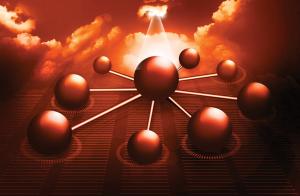An insurer’s perspective on risk drivers for distributed resources.
Richard B. Jones is senior vice president for research and engineering at The Hartford Steam Boiler Inspection and Insurance Company, Hartford, Conn., where he is responsible for the development and application of new insurance products and services for renewables and other energy resources. His work involves developing risk-based methods for insuring minimum levels of system performance. He holds a Ph.D in nuclear science and engineering from Virginia Tech.
For microgrid owners and operators today, there are insurers who will cover losses for some types of equipment and systems. But there is currently no insurance product that will cover the performance of the entire microgrid.

That suggests a need to uncover and pinpoint some of the complexities associated with the resilience of microgrids and distributed generation - from an insurer's perspective.
This work will identify and quantify risks for microgrids and distributed generation, as may be associated with product design parameters, long-term maintenance strategies, and weather-induced outages occurring on the local utility system. Also, it will demonstrate some important resilience metrics as key underwriting variables for performance-based insurance of distributed generation and microgrid installations.
For our purposes, we can define distributed generation as electric power generation within distribution networks or on the customer side of the utility supplied network.1 We can define a microgrid as a group of interconnected loads and distributed generation resources with clearly defined electrical boundaries that acts as a single controllable entity with respect to the grid - an entity that can connect and disconnect from the grid to enable it to operate in both grid-connected or island mode.2

